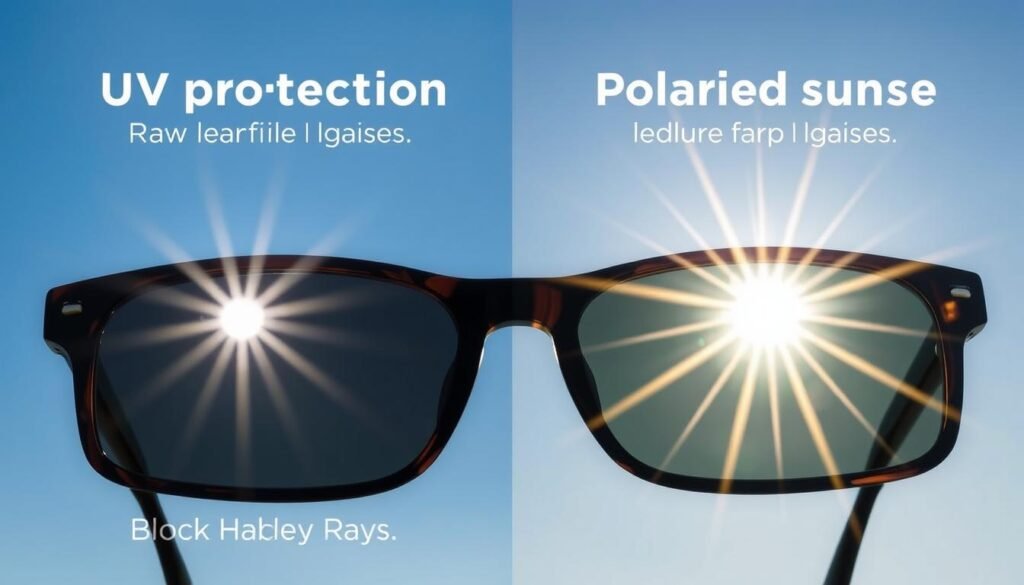When shopping for sunglasses, you’ve likely encountered terms like “UV protection” and “polarized lenses.” But do you know what these features actually mean for your eye health? More importantly, do you understand which one should be your priority when selecting your next pair of shades?
Sunglasses are more than just a fashion statement—they’re essential tools for protecting one of your most valuable assets: your vision. With the right pair, you can shield your eyes from harmful radiation, reduce glare, and prevent long-term damage that could lead to serious conditions like cataracts and macular degeneration.
In this guide, we’ll explore the critical differences between UV and polarized sunglasses, helping you make an informed decision about which type offers better protection for your specific needs. Let’s clear up the confusion and focus on what really matters for your eye health.
What Are UV Protection Sunglasses?
UV protection sunglasses are specifically designed to block harmful ultraviolet radiation from reaching your eyes. These invisible rays from the sun can cause significant damage to your eyes over time, much like they do to your skin.

Types of UV Rays
There are three types of ultraviolet rays: UVA, UVB, and UVC. While our atmosphere blocks most UVC rays, both UVA and UVB can reach your eyes and cause damage. Quality UV-blocking sunglasses should protect against both types.
UVA Rays
These have longer wavelengths and can penetrate deep into the eye. Long-term exposure to UVA rays has been linked to macular degeneration, a leading cause of vision loss in older adults.
UVB Rays
These have shorter wavelengths and are primarily responsible for sunburns. UVB rays can damage the cornea and lens of your eye, contributing to the development of cataracts.
Health Risks of UV Exposure
Prolonged exposure to UV radiation without proper protection can lead to several serious eye conditions:
- Cataracts: Clouding of the eye’s lens that can eventually lead to blindness if untreated
- Macular degeneration: Deterioration of the central portion of the retina, which can result in vision loss
- Photokeratitis: Essentially a sunburn of the cornea, causing temporary but painful vision problems
- Pterygium: Growth of tissue on the white of the eye that can extend to the cornea
- Skin cancer: The delicate skin around your eyes is particularly vulnerable to UV damage
Industry Standards for UV Protection
When shopping for UV-protective sunglasses, look for labels indicating “100% UV protection” or “UV400.” These sunglasses block all light rays with wavelengths up to 400 nanometers, which includes both UVA and UVB rays.
Important: The darkness of sunglass lenses does not indicate their level of UV protection. Clear lenses with proper UV coating can provide the same protection as dark lenses.
What Are Polarized Sunglasses?
Polarized sunglasses feature a special filter that blocks intense reflected light, reducing glare from surfaces like water, snow, and glass. This technology significantly improves visibility and comfort in bright, reflective environments.
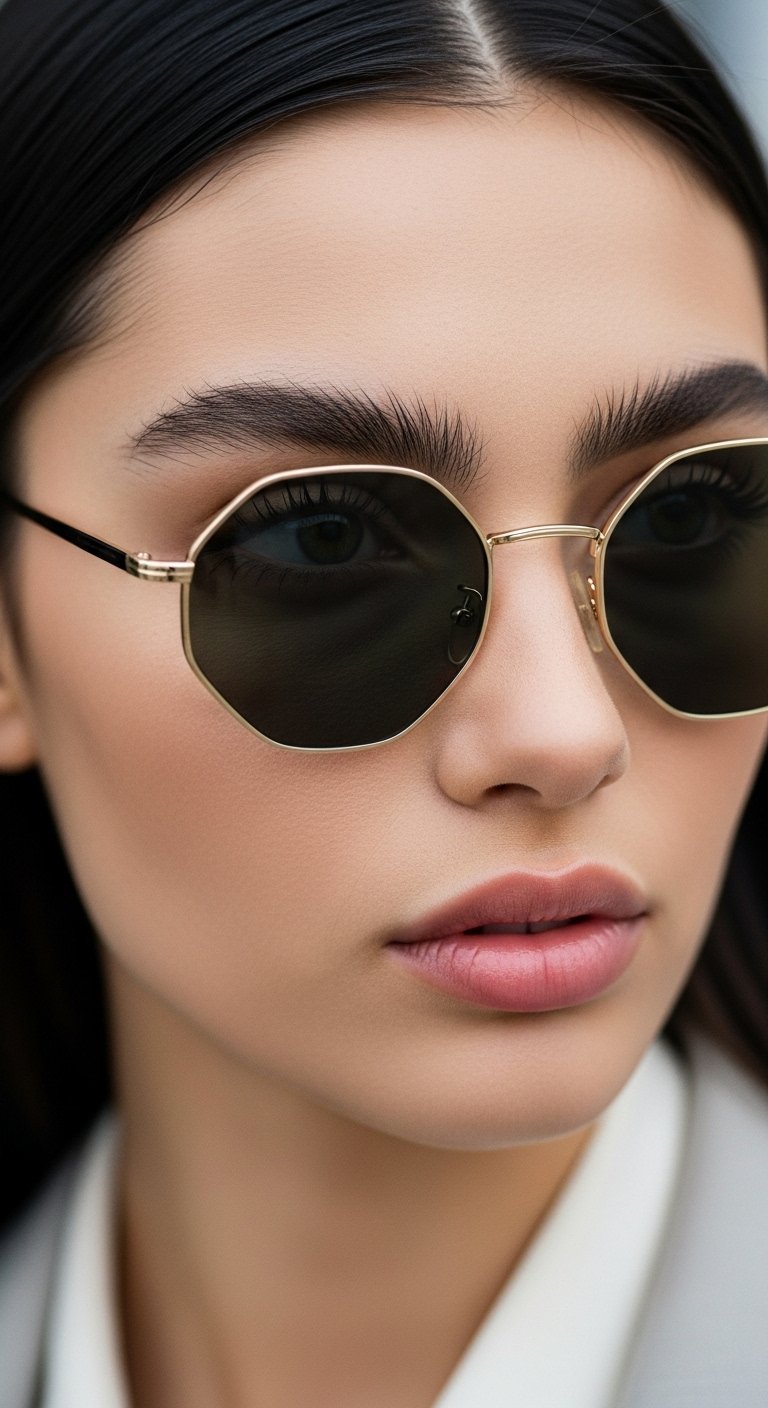
How Polarization Works
Light waves from the sun scatter in all directions. However, when light bounces off flat surfaces, it becomes polarized—meaning it travels in a more uniform, horizontal direction. This concentrated light creates glare that can be intense and uncomfortable.
Polarized lenses contain a special chemical filter with molecules aligned in vertical patterns. These filters block the horizontally-oriented light waves while allowing vertical light waves to pass through, effectively eliminating glare.
Ideal Uses for Polarized Sunglasses
Polarized lenses are particularly beneficial for certain activities and environments:
Water Activities
Fishing, boating, and swimming benefit from polarized lenses as they reduce glare from water surfaces and allow you to see beneath the surface more clearly.

Snow Sports
Skiers and snowboarders face intense glare from snow. Polarized lenses reduce this glare, improving visibility and making the experience more comfortable.

Driving
Polarized lenses can reduce glare from other vehicles and wet roads, potentially making driving safer and less fatiguing on bright days.
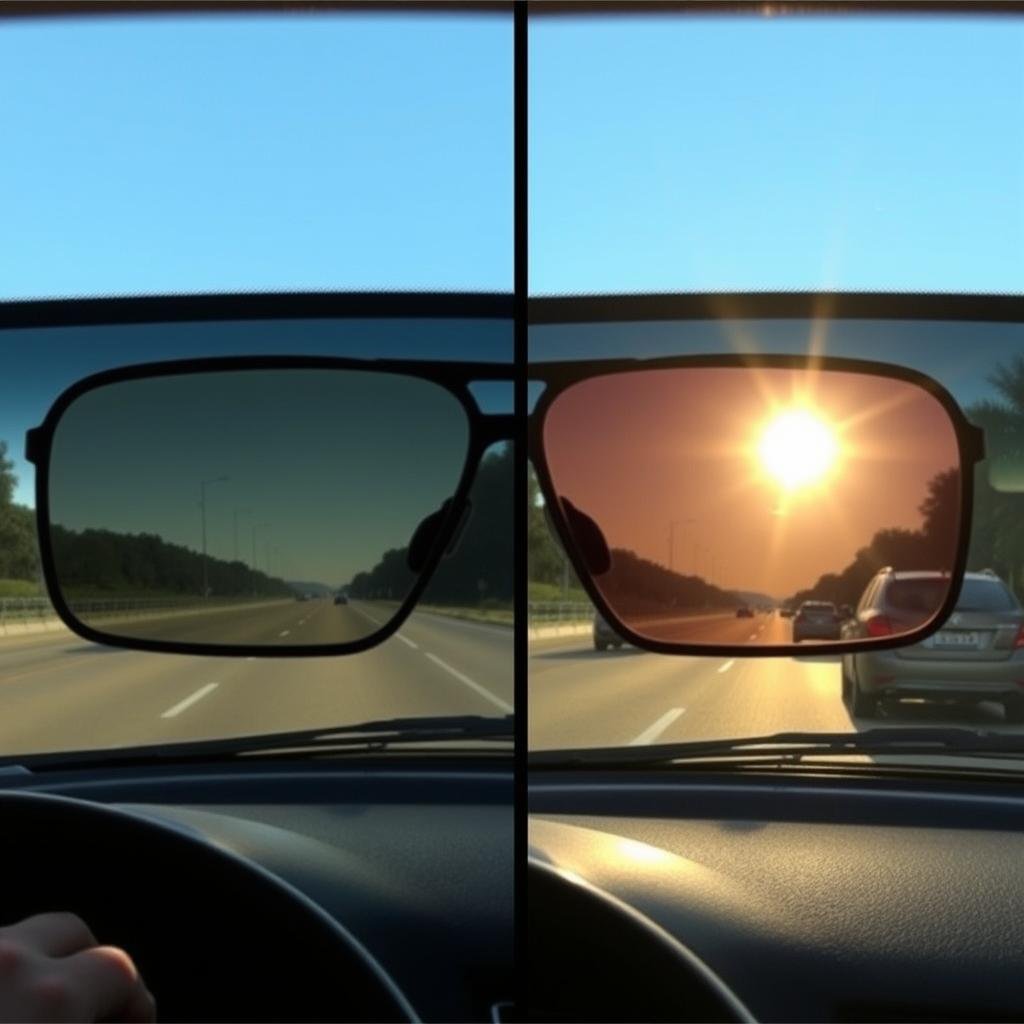
Note: Polarized lenses are not recommended for all situations. They can make it difficult to view LCD screens (like those on dashboards or smartphones) and may reduce visibility on icy surfaces while skiing.
Polarization ≠ UV Protection
It’s crucial to understand that polarization alone does not provide UV protection. The polarizing filter reduces glare but doesn’t necessarily block harmful UV rays unless specifically designed to do so. Many quality polarized sunglasses include UV protection, but you should always verify this feature when purchasing.
Key Differences Between UV and Polarized Sunglasses
Understanding the fundamental differences between UV protection and polarization will help you make an informed decision about which features matter most for your eye health and visual comfort.
| Feature | UV Protection Sunglasses | Polarized Sunglasses |
| Primary Function | Block harmful ultraviolet radiation | Reduce glare from reflective surfaces |
| Health Benefit | Prevents eye damage and conditions like cataracts and macular degeneration | Reduces eye strain and improves visual comfort |
| Blocks Harmful Rays | Yes (UVA and UVB) | Only if specifically designed with UV protection |
| Reduces Glare | No | Yes |
| Best For | Everyday sun exposure, essential for eye health | Water/snow activities, driving, high-glare environments |
| Cost | Available at various price points | Typically more expensive |
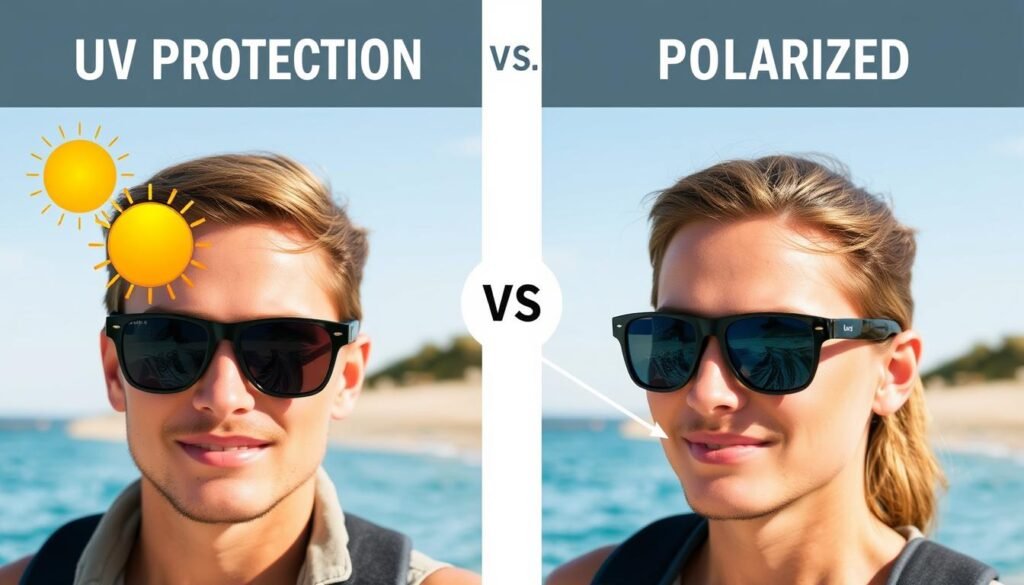
Health Protection vs. Visual Comfort
The fundamental difference between these two types of sunglasses lies in their primary purpose:
UV protection is essential for eye health and preventing long-term damage, while polarization is primarily about visual comfort and clarity in high-glare situations.
Think of UV protection as sunscreen for your eyes—it’s a health necessity. Polarization, on the other hand, is more like an upgrade that improves your visual experience in specific conditions.
Can You Have Both UV Protection and Polarization?
The good news is that you don’t have to choose between UV protection and polarization—many high-quality sunglasses offer both features. In fact, many reputable eyewear manufacturers combine these technologies to provide comprehensive eye protection and comfort.

How to Identify Dual-Protection Sunglasses
When shopping for sunglasses that offer both UV protection and polarization, look for these indicators:
- UV400 or 100% UV protection label – Ensures complete protection against UVA and UVB rays
- Polarized label – Indicates the presence of a polarizing filter to reduce glare
- Reputable brands – Established eyewear manufacturers are more likely to accurately represent their products’ features
- Price point – While not always the case, quality dual-protection sunglasses typically cost more than basic models
Warning: Some inexpensive sunglasses may claim to be polarized and UV-protective but fail to deliver on these promises. When possible, purchase from reputable retailers and brands with established track records.
Testing Your Sunglasses
Not sure if your current sunglasses offer both protections? Here are simple tests you can perform:
UV Protection Test
The most reliable way to test UV protection is to take your sunglasses to an optician who can use a UV light meter to measure how much UV radiation passes through the lenses. Many optical shops offer this service for free.
Polarization Test
To test if your sunglasses are truly polarized, look at an LCD screen (like your phone) through the lenses and rotate the glasses 90 degrees. If the lenses are polarized, the screen will appear to darken or even turn black at certain angles.
How to Choose the Right Sunglasses for Your Needs
Selecting the perfect pair of sunglasses depends on your specific activities, environment, and personal preferences. Here’s a practical guide to help you make the best choice for your eye health and visual comfort.
Activity-Based Recommendations
Everyday Use
- UV400 protection is essential
- Polarization is beneficial but optional
- Comfortable fit for extended wear
- Style that complements your face shape
- Durable frame material for daily handling
Water Activities
- UV400 protection is essential
- Polarization highly recommended
- Floating frames or retention strap
- Wraparound style to block side light
- Water-resistant materials
Driving
- UV400 protection is essential
- Polarization recommended for glare reduction
- Not too dark (Category 2-3 tint)
- Anti-reflective coating beneficial
- Comfortable fit with headrest
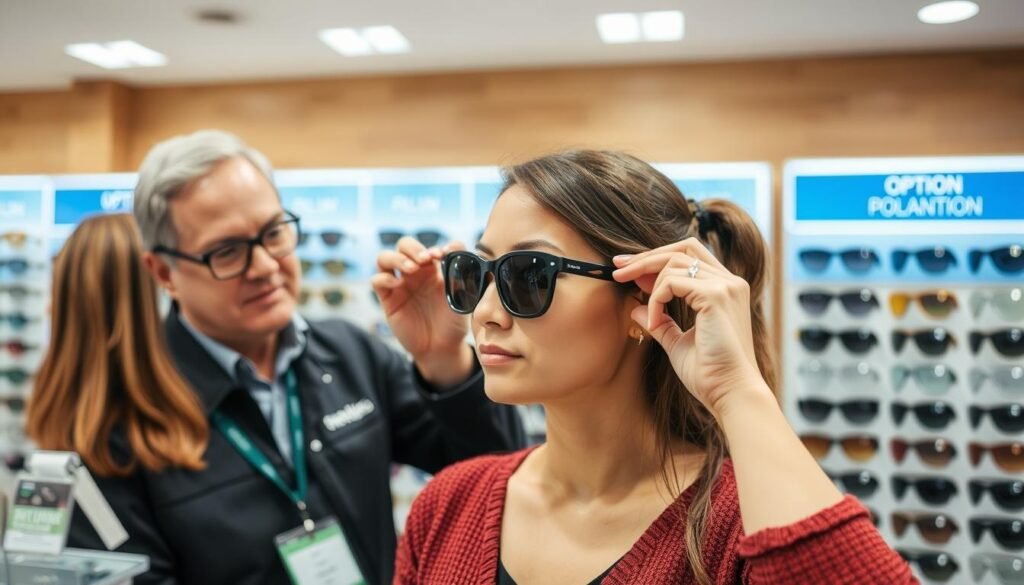
Budget Considerations
While it’s possible to find affordable sunglasses with both UV protection and polarization, be wary of extremely cheap options that make bold claims. Remember that investing in quality eyewear is investing in your long-term eye health.
When to Prioritize UV Protection
- Always – UV protection should never be compromised
- When on a limited budget (UV protection can be affordable)
- For children’s eyewear (eye damage is cumulative over lifetime)
- When you have light-colored eyes (more susceptible to UV damage)
When to Add Polarization
- For water sports, fishing, or boating
- For driving, especially on bright, wet roads
- For snow sports and high-altitude activities
- If you’re sensitive to glare or have had eye surgery
Additional Features to Consider
Beyond UV protection and polarization, consider these features for enhanced eye protection:
- Wraparound frames – Prevent UV rays from entering from the sides
- Impact-resistant lenses – Provide additional safety for active lifestyles
- Photochromic lenses – Darken in bright conditions and lighten in dim light
- Anti-reflective coating – Reduces reflections on the back surface of lenses
- Scratch-resistant coating – Extends the life of your sunglasses
Conclusion: Making the Right Choice for Your Eyes
When it comes to the question of UV vs. polarized sunglasses, the answer isn’t about which is better—it’s about understanding that they serve different purposes. UV protection is non-negotiable for preserving your long-term eye health, while polarization is a valuable feature that enhances visual comfort in specific situations.

The ideal approach is to invest in quality sunglasses that offer both UV400 protection and polarization, especially if you spend time in high-glare environments. However, if your budget constrains you to choose just one feature, always prioritize UV protection—your future self will thank you for protecting your vision.
Remember that sunglasses are an investment in your eye health, not just a fashion accessory. By understanding the differences between UV and polarized protection, you can make an informed decision that keeps your eyes safe and comfortable for years to come.
Protect Your Eyes Today
Ready to invest in quality eye protection? Visit your local optician for a professional consultation and find sunglasses that offer both UV protection and polarization for optimal eye health.
Do all polarized sunglasses provide UV protection?
No, not necessarily. Polarization and UV protection are separate features. While many quality polarized sunglasses also include UV protection, some may not. Always check for specific UV400 or 100% UV protection labeling when purchasing polarized sunglasses.
Can clear or lightly tinted glasses provide UV protection?
Yes, the level of UV protection is not related to how dark the lenses are. Clear or lightly tinted lenses with proper UV coating can provide the same level of protection as dark lenses. This is why it’s important to check for UV protection labeling rather than judging by lens color.
How often should I replace my sunglasses?
Quality sunglasses with UV protection should last for several years if properly cared for. However, if your lenses become scratched or damaged, or if the frames no longer fit properly, it’s time to replace them. Some UV coatings can degrade over time, so replacing sunglasses every 2-3 years is a good practice for ensuring optimal protection.

